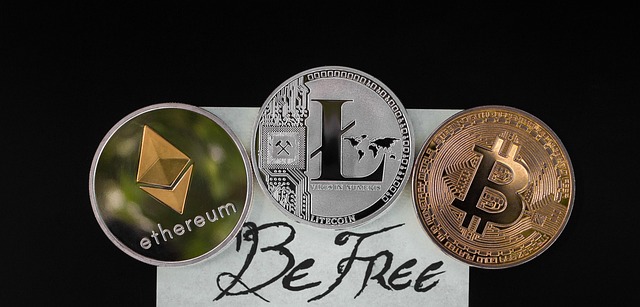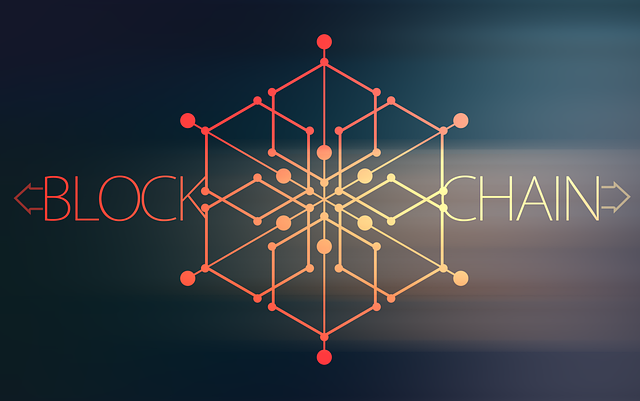Crypto Transaction Status Check: A Comprehensive Guide for Traders and Investors
Author: Jameson Richman Expert
Published On: 2025-09-16
Prepared by Jameson Richman and our team of experts with over a decade of experience in cryptocurrency and digital asset analysis. Learn more about us.
In the rapidly evolving landscape of cryptocurrencies, understanding how to effectively verify the status of your crypto transactions is essential for maintaining security, transparency, and operational efficiency. Whether you are a professional trader executing high-frequency trades, a long-term investor holding substantial assets, or a crypto enthusiast experimenting with new tokens, accurately tracking transaction progress provides critical insights into network conditions, potential delays, and overall transaction health. This knowledge not only minimizes risks associated with lost funds or prolonged settlement times but also enhances strategic decision-making in your crypto journey, enabling you to respond proactively to network fluctuations or unforeseen issues.

Understanding Crypto Transaction Verification in Depth
Cryptocurrency transaction verification is a fundamental component of blockchain technology, serving as the assurance that your digital asset transfer has been successfully recorded on the ledger. Unlike traditional banking systems that rely on centralized databases, blockchain networks operate on a decentralized consensus mechanism involving miners or validators who confirm transactions across a distributed network. When you initiate a transfer—such as sending Bitcoin from your wallet to another address—the transaction is broadcasted to the network and enters a mempool, a temporary holding area for unconfirmed transactions.
This process involves several key steps: broadcasting, mempool placement, prioritization, inclusion in a block, and confirmation. Miners or validators assess pending transactions based on fee levels, network congestion, and transaction complexity. Once your transaction is included in a block through proof-of-work (PoW), proof-of-stake (PoS), or other consensus algorithms, it receives its first confirmation. Subsequent blocks added to the chain, known as confirmations, further solidify the transaction’s permanence. Generally, the security and finality of your transaction increase with each additional confirmation, as it becomes increasingly embedded in the blockchain's immutable history. For instance, Bitcoin recommends 3-6 confirmations for high-value transfers, while Ethereum’s typical security threshold is around 12-15 confirmations, depending on the context and recipient’s security protocols.
Understanding the confirmation process is crucial because it directly reflects network security levels, transaction finality, and the risk of double-spending or chain reorganizations. Multiple confirmations serve as a security buffer, especially for large transactions or exchange settlements, where mandated confirmation thresholds ensure funds are fully settled. This process is also affected by network-specific factors such as block time, block size, protocol upgrades, and consensus algorithms, which influence confirmation speed, transaction throughput, and reliability.
Tools and Methods for Checking Transaction Status: A Technical Overview
Monitoring your crypto transaction status involves utilizing a variety of tools and platforms designed for real-time blockchain data analysis. Blockchain explorers are the primary interfaces providing transparent, detailed, and immediate transaction information. They enable users to input identifiers such as transaction hashes (TXIDs), wallet addresses, or block numbers to retrieve comprehensive data, including confirmation counts, timestamps, transaction fees paid, block height, and overall status.
- Etherscan: The leading explorer for Ethereum and ERC-20 tokens. It provides detailed transaction data, token transfers, smart contract interactions, gas price analytics, and pending transaction tracking. Etherscan’s advanced tools allow for tracing the entire transaction path and analyzing smart contract call logs.
- BscScan: Focused on Binance Smart Chain (BSC), offering similar features tailored for BSC transactions, including token transfers, contract verification, and network statistics.
- Blockchair and CryptoID: Multi-blockchain explorers that aggregate data across Bitcoin, Ethereum, Ripple, Litecoin, and more. They provide network health metrics, transaction history, mempool activity, and comparative insights across chains.
Most exchanges incorporate built-in transaction tracking dashboards, showing real-time status updates like "Pending," "Unconfirmed," "Confirmed," or "Failed." These dashboards often feature estimated confirmation times based on current network congestion and fee levels. Advanced analytical services such as CoinGecko, CoinMarketCap, and Glassnode further analyze network metrics—transaction volumes, mempool size, average confirmation times, and fee trends—allowing users to optimize their transaction timing and fee strategies effectively.
Factors Influencing Confirmation Times and Network Dynamics
Several interconnected factors influence the speed at which a crypto transaction receives confirmations. Understanding these variables empowers traders and investors to optimize their transaction processes:
- Network Congestion: During periods of high activity—such as bull markets, major protocol upgrades, or significant news events—the mempool becomes densely populated, leading to longer confirmation times. Bitcoin’s block size limit (1MB) and approximately 10-minute block time can cause delays when many transactions compete for inclusion. Conversely, blockchains like Solana, Avalanche, and others designed for high throughput utilize different consensus mechanisms, often achieving near-instant finality, even during peak periods.
- Transaction Fees and Gas Prices: Fees serve as prioritization incentives for miners or validators. During congestion, fee levels soar, prompting users to pay higher amounts for expedient confirmation. Wallets and exchanges typically recommend dynamic fee estimates based on real-time mempool data to balance cost and speed. Paying higher fees generally results in faster confirmation; however, savvy users can time transactions during lower fee periods to minimize costs.
- Transaction Size and Complexity: Larger or more complex transactions—such as those involving smart contract interactions or multi-inputs—require additional validation processing, potentially increasing confirmation times. Smart contracts involving multiple steps or data-heavy operations may also introduce latency.
- Protocol Upgrades and Network Events: Hard forks, soft forks, security patches, or network congestion spikes caused by DDoS attacks can impact confirmation speeds temporarily. Staying informed via official channels like project blogs or social media helps users adjust fee levels or transaction timings accordingly.
By understanding these factors, users can better plan transaction timing, select appropriate fee levels, and mitigate delays or excess costs, especially under volatile network conditions.

Best Practices for Managing Crypto Transactions Effectively
To maximize success rates and reduce delays, traders and investors should follow these best practices:
- Verify Recipient Details: Always double-check wallet addresses and transaction amounts. Use QR codes or copy-paste functions to prevent typographical errors that could lead to irreversible loss of funds.
- Set Optimal Transaction Fees: Use real-time fee estimators provided by wallets or exchanges. During peak congestion, consider paying slightly higher fees to ensure timely confirmation, especially for urgent transactions.
- Monitor Network Conditions: Stay updated via blockchain explorers, official social channels, and community forums. Awareness of upcoming network upgrades or congestion spikes allows better transaction timing and fee adjustment.
- Use Notification and Alert Systems: Many platforms support real-time alerts for transaction status changes, ensuring prompt awareness of confirmations or delays.
- Transaction Splitting: For large transfers, consider splitting into smaller chunks to reduce risk exposure and improve confirmation speed during congestion periods.
- Security Measures: Employ hardware wallets, cold storage, and multisignature solutions for high-value transfers, ensuring assets are protected while awaiting confirmation.
The Significance of Choosing Reliable Exchanges and Leveraging Referral Programs
Platform choice impacts transaction efficiency, security, and user experience significantly. Reputable exchanges such as Binance, MEXC, Bitget, and Bybit offer robust infrastructure, security features, and advanced transaction tracking tools. Key benefits include:
- Enhanced security protocols like multi-factor authentication, cold storage, and regular security audits.
- High-performance infrastructure capable of handling high transaction volumes with minimal latency.
- Integrated real-time transaction dashboards and network health metrics for proactive monitoring.
- Transparent fee structures and timely communication during network upgrades or congestion periods.
Engaging with platform referral programs not only fosters community but also provides tangible benefits:
- Trading fee discounts, lowering the cost of frequent transactions.
- Deposit bonuses or trading credits to expand trading capacity.
- Priority access to new features, research tools, or promotional events.
Examples include:
Participating in these programs can improve your trading efficiency, incentivize security best practices, and foster community engagement.
Leveraging Advanced Tools and Resources for Strategic Trading
Modern crypto traders utilize sophisticated tools to gain a competitive edge:
- Market Insights and Analysis: Platforms like CryptoTradeSignals offer in-depth market cycle analyses, regulatory implications, and technological trends, helping optimize transaction timing.
- Automated Trading Bots and Algorithms: Resources such as Creating a Profitable Trading Bot facilitate automation, reduce emotional biases, and enable rapid responses to market dynamics.
- Advanced Trading Platforms: Tools discussed in Trading Software for Windows 2025 provide real-time analytics, liquidity tracking, and automated execution—crucial for high-frequency trading and portfolio management.
Continuous education, staying abreast of technological trends, and integrating industry insights are key to maintaining a strategic advantage and executing cost-effective transactions.

Conclusion: Mastering Crypto Transaction Verification for Optimal Results
In conclusion, mastering the art of crypto transaction status checks is vital for secure, efficient, and profitable digital asset management. Deep knowledge of confirmation mechanisms, utilization of advanced analytical tools, and proactive monitoring of network conditions enable users to minimize delays, control costs, and enhance security. Always prioritize reputable platforms like Binance, MEXC, Bitget, and Bybit for reliable infrastructure and transparent operations. Additionally, leverage referral programs, industry insights, and cutting-edge trading tools to maximize your trading efficiency and strategic positioning.
Stay informed through trusted sources such as CryptoTradeSignals to anticipate market shifts and network developments. By elevating transaction verification from a routine technical task into a strategic component of your trading arsenal, you empower yourself to navigate the dynamic crypto environment confidently and profitably.